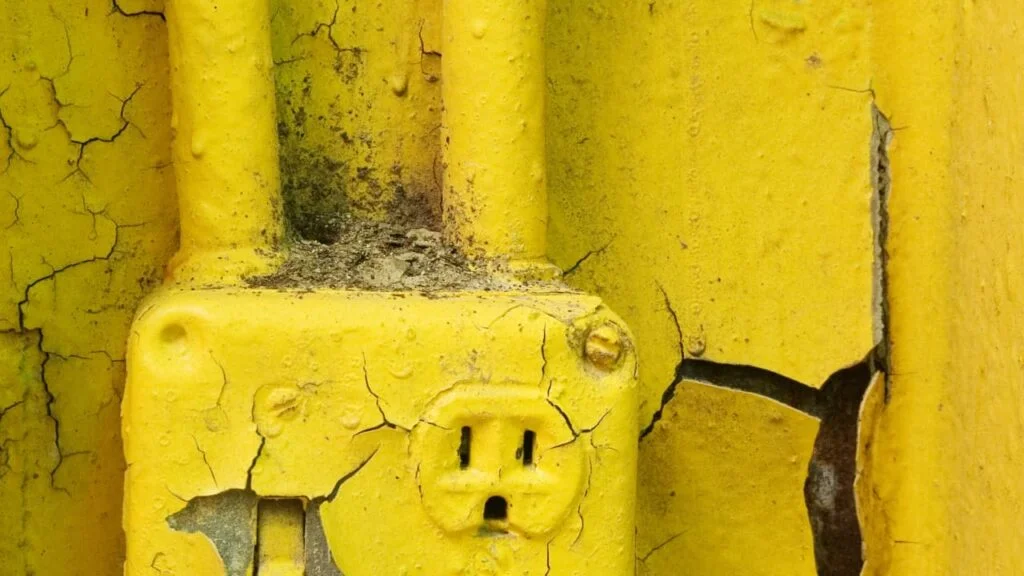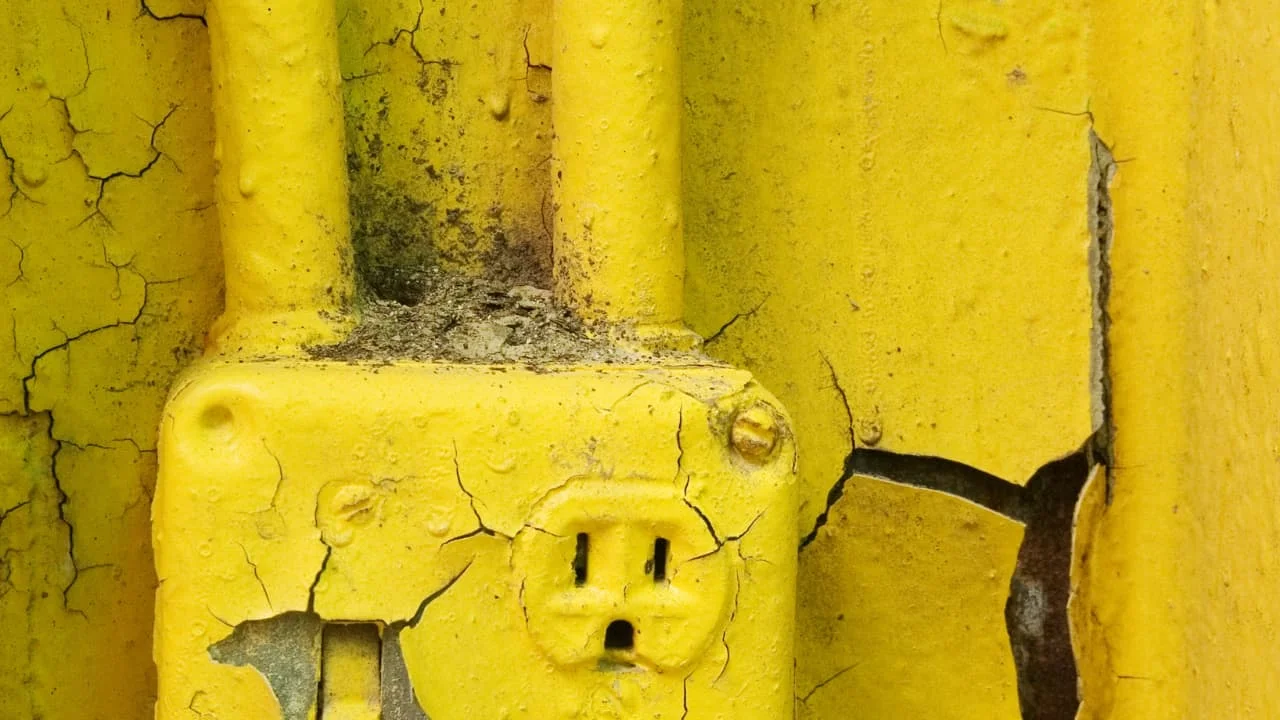Introduction
If you’re looking to give your home a fresh new look, one small detail that can make a big difference is updating your electrical outlets. But painting them without making a mess or causing safety hazards may seem challenging.
In this blog post, we’ll teach you how to safely spray paint your electrical outlets by following five expert hacks that are simple yet effective.
Key Takeaways – Can You Paint Electrical Outlets? 💭
- Safety is crucial when painting electrical outlets, so be sure to turn off the power and choose non-conductive paint types.
- To successfully paint an outlet, properly prepare it by cleaning and sanding lightly before applying primer and multiple thin coats of paint with a small brush.
- When needing to paint near electrical outlets without damaging them, use painter’s tape for protection or consider seeking professional help for complex jobs. And always prioritize safety!
Table of Contents

Safety Considerations When Painting Electrical Outlets
Before painting electrical outlets, it is crucial to turn off the power and choose safe paint types, while also handling the painted outlets themselves safely to avoid short circuits or other potential hazards.
Turning Off The Power
Before you embark on the task of painting electrical wall outlets yourself, prioritizing safety is of utmost importance. One essential step to ensure a secure and hazard-free process is turning off the power at its source.
It’s always a good idea to double-check that the power is indeed disconnected by using a non-contact voltage tester—a simple yet highly effective tool—once the outlet cover has been removed.
This precautionary measure safeguards not only yourself but also preserves the integrity of national electrical code and your home’s electrical system.
Choosing Safe Paint Types
Selecting the appropriate paint type is crucial when it comes to painting electrical outlets, as not all paints are created equal. Many experts recommend using a non-conductive paint for this task to minimize potential fire hazards and avoid disrupting the functionality of your electrical components.
Before you begin painting, be sure to read the labels on your chosen paint carefully to ensure that it is suitable for use on electrical devices. Keep in mind that certain types of wall paint may contain metallic particles or other conductive additives that could pose a risk when used near live wires.
Also, consider opting for a specialized paintable outlet cover instead of applying paint directly onto the outlet itself.
Handling Electrical Outlets Safely
Handling electrical outlets safely is crucial while attempting to paint them or working in their vicinity. Proper safety precautions not only protect you from potential injuries but also ensure that the outlet continues to function correctly after the painting project.
To begin with, always turn off the light switch and the power to the outlets before starting any work around them.
When it comes to actually painting an electrical wall plate or outlet, make sure you wear protective gear such as gloves and goggles throughout the process. A small brush should be used for applying thin layers of non-conductive paint carefully over the surface of each component including wall plates, cover plates, and screws without letting any excess paint seep into outlet holes or hinder contact points between electrical wires and other components.
Remember that patience is essential when tackling a DIY project like this one involving both aesthetics and safety concerns alike.
Expert Hacks For Painting Electrical Outlets
To prepare the outlet for painting, clean it thoroughly with a damp cloth and use painter’s tape to protect surrounding surfaces; when applying paint, use thin layers with a small brush, allowing ample drying time before reattaching outlet covers and testing the painted outlet itself to ensure proper functioning.
Preparing The Outlet For Painting
To ensure a smooth and safe painting process, it’s important to properly prepare the electrical outlet before painting. Here are some key steps to follow:
- Turn off the power: Before doing any work on the outlet, turn off the power from the breaker box to avoid any risk of electrocution or short-circuiting.
- Remove cover plate: Use a screwdriver to remove the cover plate from the outlet and gently pull it away.
- Tape surrounding surfaces: Apply painter’s tape around the outlet and on any nearby surfaces you want to protect from paint splatters.
- Clean outlet: Clean the surface of the outlet with a damp cloth to remove any dust or debris, allowing for better paint adhesion.
- Sand lightly: Lightly sand the surface of the outlet using fine-grit sandpaper (220 grit), which will help create a rougher surface for better paint adhesion.
- Apply primer: Apply a thin coat of primer specifically designed for use on electrical devices with a small brush, and let dry completely.
- Paint in thin coats: Using a small brush, apply 2-3 even layers of high-quality non-conductive paint in thin coats to prevent drips and allow ample drying time between each layer.
- Reattach cover plate: Once all coats have completely dried, reattach the cover plate with screws and test that everything is functioning well before turning on the power again.
By following these simple steps, you can successfully paint and replace your electrical outlets without putting yourself or your home at risk!
Using Painter’s Tape To Protect Surrounding Surfaces
One of the expert hacks for painting electrical outlets is to use painter’s tape to protect paint outlets and surrounding surfaces. Simply apply the tape around the outlet covers and any nearby walls or fixtures that you want to keep clean.
This will prevent paint from accidentally getting on these areas and creating a mess that requires extra time and effort to fix. Make sure to press down firmly on the edges of the tape so that there are no gaps where paint can seep through.
Once you’ve finished painting, carefully remove the tape while the paint is still wet for a clean and professional-looking finish.
With proper application, using painter’s tape can help prevent common mistakes like getting an uneven coat of paint or leaving unsightly drips behind.
Applying Paint In Thin Layers With A Small Brush
One of the expert hacks for painting electrical outlets and light switches is to apply paint in thin layers with a small brush. This method ensures that you don’t overload the outlet or switch with too much paint, which could lead to problems down the line.
By using a small brush and spreading multiple thin coats, you can achieve a smooth and even finish without interfering with any of the electrical components.
It’s important to allow each coat to dry completely before adding another layer or reattaching the cover plate.
Other related tips include choosing non-conductive paint types, practicing proper safety precautions, and testing the outlet after finishing painting it just to be sure there aren’t any issues such as a short circuit, circuits or fire hazards.
Allowing Ample Drying Time Before Reattaching Outlet Covers
It’s crucial to allow enough drying time before reattaching outlet covers after painting electrical outlets. This will ensure that the paint has adequately dried and hardened, preventing any smudging or peeling when you put the cover back on.
Experts recommend waiting at least four hours before reattaching outlet covers for the best results. It is also essential to test the outlet to ensure it functions correctly before screwing the cover back on fully.
Testing The Outlet To Ensure Proper Functioning
After you’ve finished painting your electrical outlets, it’s important to test them to ensure they’re functioning properly before reattaching the outlet covers. You can do this safely by turning the power back on and using a voltage tester or plugging in a device.
It’s also important to note that if you’re not comfortable testing the outlets yourself, it’s recommended that you call a licensed electrician to come and check them for you.
Safety should always be your top priority when dealing with electrical components.
Tips For Avoiding Painting Near Electrical Outlets
To avoid damaging electrical components or causing a fire hazard, cover the outlet with painter’s tape before painting nearby surfaces, work slowly and carefully to prevent paint spills, and consider seeking professional help for complex jobs.
Covering The Outlet With Painter’s Tape
To protect your electrical outlets from paint, covering them with painter’s tape is a simple but effective solution. It’s important to use high-quality, heavy-duty painter’s tape that won’t damage the outlet or surrounding surfaces when removed.
Apply the tape carefully around the edges of the outlet cover and press it firmly to create a tight seal. This will prevent any paint drips or splatters from getting into the wiring or outlet holes and causing potential hazards such as short circuits or fire hazards.
Working Slowly And Carefully
It’s important to take your time and work carefully when painting near electrical outlets to avoid any potential safety hazards. Rushing through the process can result in paint getting on electrical components or cover plates, which can cause short circuits or even fire hazards.
To prevent these risks, make sure you’re working slowly and with steady hands.
If you’re feeling unsure about your abilities to safely paint around electrical outlets, consider enlisting the help of a licensed electrician or professional painter who has experience with this type of project.
It’s always better to err on the side of caution when dealing with potentially dangerous situations like applying paint near electrical wires and devices.
Considering Professional Help For Complex Jobs
If you are faced with a complex paint job involving electrical outlets, it may be best to seek professional help. Licensed electricians have the knowledge and experience required to ensure that electrical safety standards are met while also achieving an aesthetically pleasing finish.
It’s important not to take shortcuts when it comes to electrical devices as improper handling can lead to fire hazards, short circuits, and other health risks.
Alternatives To Painting Electrical Outlets
Instead of painting electrical outlets, there are alternative options such as replacing outlet covers with new ones or using decorative wall plates to conceal them.
Replacing Outlet Covers With New Ones
If you’re not comfortable with painting your house or electrical outlets, or just want a quick fix, replacing the outlet covers might be the way to go. It’s important to note that switching out covers won’t change any underlying electrical issues and should only be done on fully functioning outlets.
There are countless options for outlet covers available in various colors, designs, and materials such as metal or wood. Some even come with built-in safety features like sliding panels to cover unused sockets.
In addition to updating the look of your room, new outlet covers can also prevent dust build-up that can cause potential fire hazards if left unchecked.
Using Decorative Wall Plates To Conceal Outlets
Decorative wall plates can be a great way to conceal electrical outlets and switch plates while adding some flair to your home decor. These plates come in various colors, shapes, and sizes, allowing you to match them with your existing wall color or go for a contrasting look.
One example of using decorative wall plates is when renovating a room and wanting to hide unsightly outlets that stick out like sore thumbs on newly painted walls. Another instance could be when trying to make an outlet blend seamlessly into patterned wallpaper or textured surfaces.
Conclusion
In conclusion, painting electrical outlets and switches can be a DIY project with the right tools, techniques, and safety precautions. As discussed in this article, it is crucial to turn off the power and handle electrical components safely before starting to paint.
Using painter’s tape to protect surfaces and applying thin coats of non-conductive paint with a small brush can ensure a smooth finish without compromising functionality or safety.
However, for more complex jobs or if you are not comfortable working around electricity, hiring a licensed electrician may be the best option. Additionally, exploring alternatives like decorative wall plates or replacing old outlet covers can add aesthetic value without requiring any painting.

